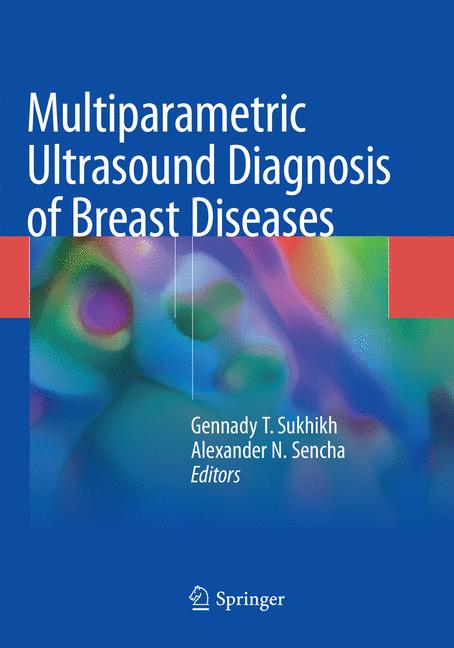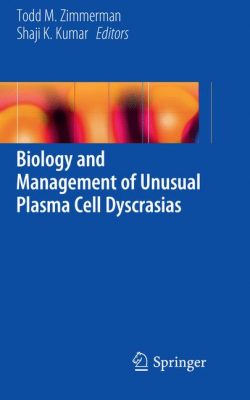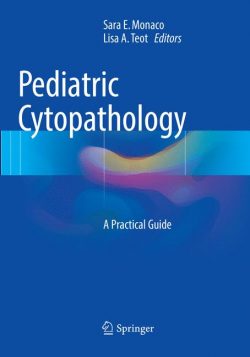This richly illustrated book provides a comprehensive overview of the use of current ultrasound techniques, including contrast-enhanced ultrasound and ultrasonic elastography, in the diagnosis of breast disease. The advantages and pitfalls of the various imaging modalities are identified, and it is explained how combined use of the modalities – multiparametric ultrasound – aids diagnosis and in particular assists in the differentiation of benign and malignant disease. Readers will find detailed description and illustration of the imaging appearances of age-related features (including in children and adolescents), the most important benign diseases, different forms of breast cancer, mammary gland pathology in the contexts of pregnancy and female reproductive system disease, chest gland pathology in males, and recurrent and metastatic disease. In addition, ultrasound-guided breast interventions and imaging of breast implants are discussed. Specialists in ultrasound diagnostics, radiologists, oncologists, and surgeons will all find this topical book to be both interesting and helpful in daily clinical practice.
Introduction
1. Current state of diagnosing of diseases of the mammary gland: contribution of medical visualization technologies
2. Ultrasonic examination of mammary glands:
2.1. Ultrasound methodology and equipment
2.2. Main difficulties and reasons of mistakes
3. Unchanged mammary glands. Special aspects of structure and variations of ultrasonic imaging:
3.1. Anatomical features of the mammary gland’s structure at different age periods.
3.2. Variations of ultrasonic imaging of the unchanged mammary gland.
3.3. Features of ultrasonic visualization of mammary glands in children.
4. Ultrasonic multiparametrical diagnosis of non-tumoral pathology (inflammatory, diffusion and degenerate changes) of mammary glands
5. Ultrasonic diagnostics of benign tumor masses of the mammary glands
6. Multiparametrical examination, basic and innovative techniques of ultrasonic examination in diagnosing of breast cancer:
6.1. Grayscale modes.
6.2. Color-coded modes, duplex examination.
6.3. Multiplanar scanning, three-dimensional reconstruction of images.
6.4. Ultrasonic elastography.
6.5. Ultrasonic examination using the contrast agents.
6.6. Breast cancer classifications. Morphological types of tumors’ structure, ultrasonic correlations.
7. Mammary glands pathology during pregnancy. Options of complex ultrasonography
8. Mammary glands pathology in case of female reproductive system diseases
9. Ultrasonic examination of chest glands in men under normal and pathological conditions:
9.1. Diagnosing of chest glands pathology in men applying the methods of X-ray visualization.
9.2. Anatomical features of chest glands’ structure in men, pathological staging.
9.3. Technologies of ultrasonic visualization of chest glands in men.
9.4. Unchanged chest gland according to the ultrasonography.
9.5. Ultrasonic diagnosing of chest gland pathology in men
9.6. Male breast cancer. Options of sonography.
10. Options of sonography at an early stage of metastatic breast cancer:
10.1. Ultrasound appearances of regional lymph node metastases.
10.2. Ultrasonic diagnostics of the breast cancer remote metastases.
11. An operated mammary gland. A state after plasticity of mammary glands. Options of ultrasonography:
11.1. Post-operative care after mammary gland removal. Ultrasonic monitoring.
11.2. Diagnostics of breast cancer recurrence.
12. Mammary gland Invasive diagnostic technologies under ultrasound control
Conclusion
“The book is an enjoyable, informative read. It could act as a useful introduction to breast ultrasound as well as being a handy reference guide to the more experienced ultra-sonographer and I would recommend it to all breast sonographers.” (Jennifer Brown, RAD Magazine, February, 2019)
Gennady T. Sukhikh, MD, PhD, is Head of the National Medical Research Center for Obstetrics, Gynecology and Perinatology, Russian Federation. Dr. Sukhikh is a Professor, a member of the Russian Academy of Medical Sciences (RAMS), and Vice-President of the Russian Society of Obstetricians and Gynecologists (RSOG). He has been at the forefront of advances in reproductive medicine and biology within Russia, and was one of the first scientists in the country to start studying the possibilities of using stem cells for therapeutic purposes. He is the author of more than 600 scientific papers and 12 monographs.
This richly illustrated book provides a comprehensive overview of the use of current ultrasound techniques, including contrast-enhanced ultrasound and ultrasonic elastography, in the diagnosis of breast disease. The advantages and pitfalls of the various imaging modalities are identified, and it is explained how combined use of the modalities – multiparametric ultrasound – aids diagnosis and in particular assists in the differentiation of benign and malignant disease. Readers will find detailed description and illustration of the imaging appearances of age-related features (including in children and adolescents), the most important benign diseases, different forms of breast cancer, mammary gland pathology in the contexts of pregnancy and female reproductive system disease, chest gland pathology in males, and recurrent and metastatic disease. In addition, ultrasound-guided breast interventions and imaging of breast implants are discussed. Specialists in ultrasound diagnostics, radiologists, oncologists, and surgeons will all find this topical book to be both interesting and helpful in daily clinical practice.
Provides a comprehensive overview of the use of current ultrasound techniques in breast imaging
Identifies topical issues in ultrasound diagnosis
Explains the benefits of multiparametric ultrasound
Describes and illustrates imaging appearances in a wide range of contexts
Equips the reader with information of high relevance to daily practice





